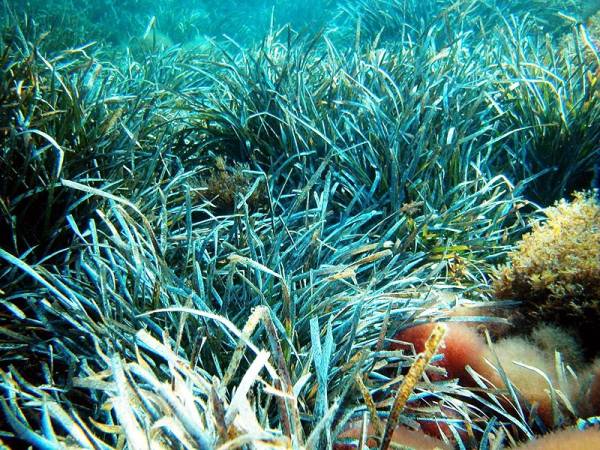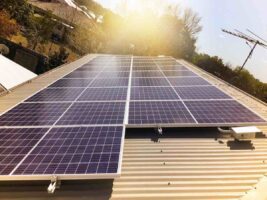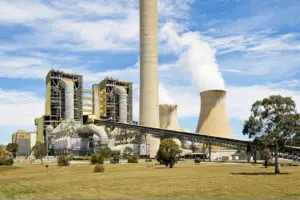Seagrass meadows are prevalent elements of Australian coastal waters, a submarine laurel crown around our country. The dark patches of water, in contrast with the turquoise blue of bare sand, that we see when sailing our coastal waters and the source of much of beach cast materials on our beaches.
Australian coastal waters probably harbor much of the global area of seagrass meadows and possibly the largest continuous seagrass meadows in the ocean. Yet, seagrass meadows lack the glamour of coral reefs and many Australians, as most people worldwide, do not think much of their seagrass. Indeed, seagrasses have been termed the “ugly ducklings of marine conservation” (Duarte et al. 2008) for the low public interest in these marine ecosystems.
Most Australians? Well, not really. Aboriginal Australians, particularly the “Salt Water People” in Australia’s North have a deep appreciation for seagrass meadows. Seagrass meadows are recognized as good Country, recognizing them to be the habitat and food source of dugongs and some turtle species. Salt water people have dozens of words to refer to the various types of seagrass species and the various configurations of the meadows they form, and their songlines and dreamlines contain a wealth of knowledge on the ecology of seagrass meadows.
New to Australia, I am fascinated by the deep understanding of marine ecology and ecosystems by “Salt Water People”, from which I have much to learn despite 25 years of professional research in marine ecology. Their effective oral transmission systems carry forward knowledge from rare events that provide a millenary repository of ecological knowledge across time scales we can otherwise only access through paleosciences.
For example, their deep knowledge of seagrass meadows includes insights onto the impacts of floods, and the subsequent plumes of turbid waters that fill the coast, on the demise of seagrass meadows and the decline of the animals they harbor, a chain of events the large 2010-2011 Queensland floods are now confirming.
Aboriginal Australians continue to be effective custodians of seagrass meadows and the, now endangered, turtles and dugongs, through, for instance, the Dugong and Marine Turtle Project, where Traditional Owners and Indigenous communities are contributing their deep understanding of these ecosystems to driving research and management activities towards the conservation of these species.
Seagrass meadows play an important role in the maintenance of marine biodiversity in coastal ecosystems (Hemming and Duarte 2000), but recent research shows that they also have the capacity to act as intense carbon sinks. In a paper published just this Sunday in Nature Geoscience with the participation of scientists at the Oceans Institute of the University of Western Australia,(Fourqurean et al. 2012), we demonstrate that the carbon stocks under seagrass meadows exceed those associated with forests. In particular, we show, on the basis of 3640 observations of 946 distinct seagrass meadows across the globe, that coastal seagrass beds store up to 83,000 metric tons of carbon per square kilometre, compared to around 30,000 metric tons per square kilometre in a typical land forest. This adds to evidence (Duarte et al. 2005, Duarte et al. 2011, Kennedy et al. 2011) that seagrass meadows are strong CO2 sinks, with a hectare of the most effective seagrass meadows exceeding by ten fold the CO2 sink capacity of the pristine Amazonian forest (Nelleman et al. 2009, McLeod et al. 2011).
Seagrass are highly productive, and are able to store much of the excess carbon they produce on the sediments. Moreover, their canopies act as efficient filters for suspended particles that also add the carbon loads to seagrass sediments, typically contributing 50% of the organic carbon deposited in seagrass sediments. Contrary to forest soils, which carbon deposits are regularly lost as CO2 to the atmosphere following forest fires, the organic carbon deposits in seagrass meadows are stable and accumulate without the risk of being lost to fires, which do not occur underwater! Seagrass lock vast amounts of carbon in the several-meter thick sediment deposits that sit under seagrass meadows.
Yet, these carbon deposits are compromised by the loss of seagrass meadows, due to dredging, coastal alterations, moorings, loss of water and sediment quality and other impacts, responsible for the loss of about 1/3 of the world’s seagrass meadows (Waycott et al. 2009), including some of Australia’s seagrass meadows. But the future of seagrass meadows is looking grim (Duarte 2002), as climate change has been identified as a threat conducive to the functional extinction of seagrass meadows by mid Century.
Research conducted in collaboration between scientists at Spain’s National Research Council and the Oceans Institute of the University of Western Australia has coupled knowledge on the thermal thresholds triggering mass mortality of Mediterranean seagrass meadows, at about 29 º C, with model projections of the probability of exceeding this threshold in the Balearic Islands (Spain) along the 21st Century under a “moderately optimistic” scenario of greenhouse gas emissions (Jordá et al. 2012). These results, reported in the issue of Nature Climate Change released last Sunday, predict that seagrass meadows in the Balearic Islands will likely become functionally extinct, declining to 10% of their current density, before 2050.
Most disturbing, this research shows that removing local impacts will increase the resistance of the seagrass to climate change only marginally, as functional extinction will only be postponed by a decade through these management actions. We conclude that there is no alternative to reducing green-house emissions to conserve seagrass meadows. But this hardly comes as a surprise, as we really have plenty of evidence – despite fiddling with spurious arguments while dragging our global feet – that there is no alternative to reducing green house gas emissions to mitigate anthropogenic climate change below dangerous levels.
It is indeed paradoxic that CO2 emissions can, through its effect on climate, do away with some of the ecosystems that play a most important role as CO2 sinks. Indeed, realization of the benefits of conserving ecosystems with a strong CO2 sink capacity to mitigate climate change has prompted strategies to fund the conservation of these ecosystems through revenues from voluntary and mandatory carbon taxes. These schemes, such as REDD, have generally focussed on tropical forests but realisation of the strong CO2 sink capacity of seagrass meadows has lead to the formulation of strategies, which we nicknamed “Blue Carbon” strategies, to mitigate climate change through the conservation and restoration of seagrass meadows (Nelleman et al. 2009). Since we made this proposal in 2009 the science of “Blue Carbon” strategies has progressed greatly (McLeod et al. 2011), although caveats and uncertainty remain.
With a significant tax on CO2 emissions, Australia has now an unique opportunity to add to efforts to conserve seagrass meadows using carbon tax revenues to support the development of the knowledge and actions required to conserve and restore seagrass meadows with their associated carbon sinks. This will be a win-win situation, because in addition to be likely self-funding as the CO2 sequestered within a few decades will probably pay back the dollars invested in the conservation and restoration of the meadows, restoring seagrass meadows will improve biodiversity, as they are habitat to a number of endangered species, including sea horses, dugongs and turtles, protect our shoreline from sea level rise and storm surges, and improve water quality.
The CSIRO has launched an initiative, the Coastal Carbon Cluster, to provide, in collaboration with universities across Australia, the scientific underpinnings necessary to resolve the role of seagrass meadows and other coastal ecosystems in Australia’s carbon budget and explore the potential to include “Blue Carbon” initiatives among the slate of strategies Australia is deploying to contribute to mitigate climate change.
I hope that realization of the key role and importance of seagrass meadows will step up efforts to conserve them and restore lost and damaged meadows across Australia so that the grandchildren of our grandchildren will be able to match the teachings about seagrass meadows in Aboriginal Australian songlines with the reality of the lush ecosystems they will enjoy while swimming in our beaches.
Carlos Duarte is Director, Oceans Institute at University of Western Australia
This article was originally published on The Conversation – theconversation.edu.au. Reproduced with permission.








